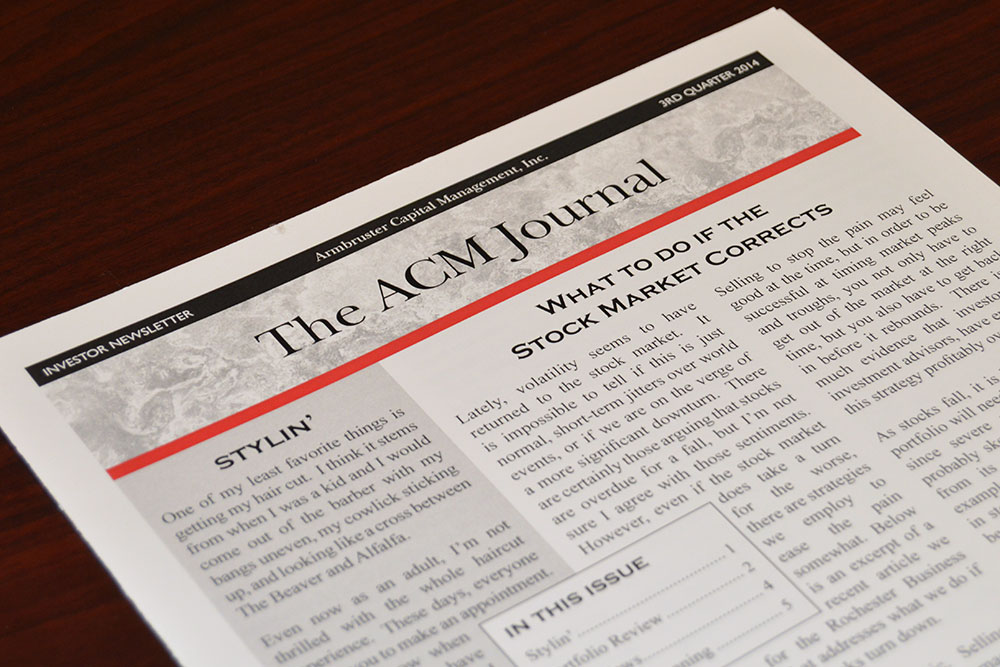Portfolio Review
The good news is that the stock market had a strong year in 2014. The S&P 500 returned almost 14%. The bad news is that almost no one earned returns that high. Because virtually every other asset class underperformed, a diversified portfolio likely earned around half of the return of the S&P 500. Mid-cap stocks earned a still respectable 10%, but small-cap stocks returned only 6%. International stocks actually lost money.

Economic Improvement at Home
The economy picked up steam last year. The unemployment rate dropped to below 6%, automotive sales hit a record high, consumer spending rebounded some, and interest rates and inflation remained tame. Economic growth, as measured by GDP, still wasn’t terribly robust, but slow, steady improvements to the economy created a favorable environment for stocks.
Continued Turmoil Overseas
Overseas, the story was less rosy. Economies in the developed and emerging markets have been slowing down, and some ended the year in outright recession. International stocks posted losses for the fourth quarter and full year periods. Interestingly, as measured in local currency, international stocks actually didn’t perform so badly. Developed markets were up almost 6%, and emerging markets were up a little better than 5%. However, the U.S. dollar appreciated versus foreign currencies late in the year, which hurt international stock market returns for U.S. investors.
Despite the poor performance, there are reasons to be optimistic about the future. For example, valuations are significantly lower in international markets than they are in the U.S. Also, despite slowing economic growth, many emerging market economies are still growing much faster than our domestic economy.
Looking forward, it is also very likely that the European Union will cut interest rates, starting a round of “quantitative easing,” similar to what we have done in the U.S. over the past several years. This should be good for international stocks, at least in local currency. However, if interest rates in the U.S. rise, as interest rates overseas fall, it is likely additional pressure will be put on foreign currencies, which could continue to hurt international stock market returns for U.S. investors. We’ll have to see which force is bigger: stock gains or currency depreciation.
To Download the rest of the article and the complete 2014 Q4 Newsletter please click below.

